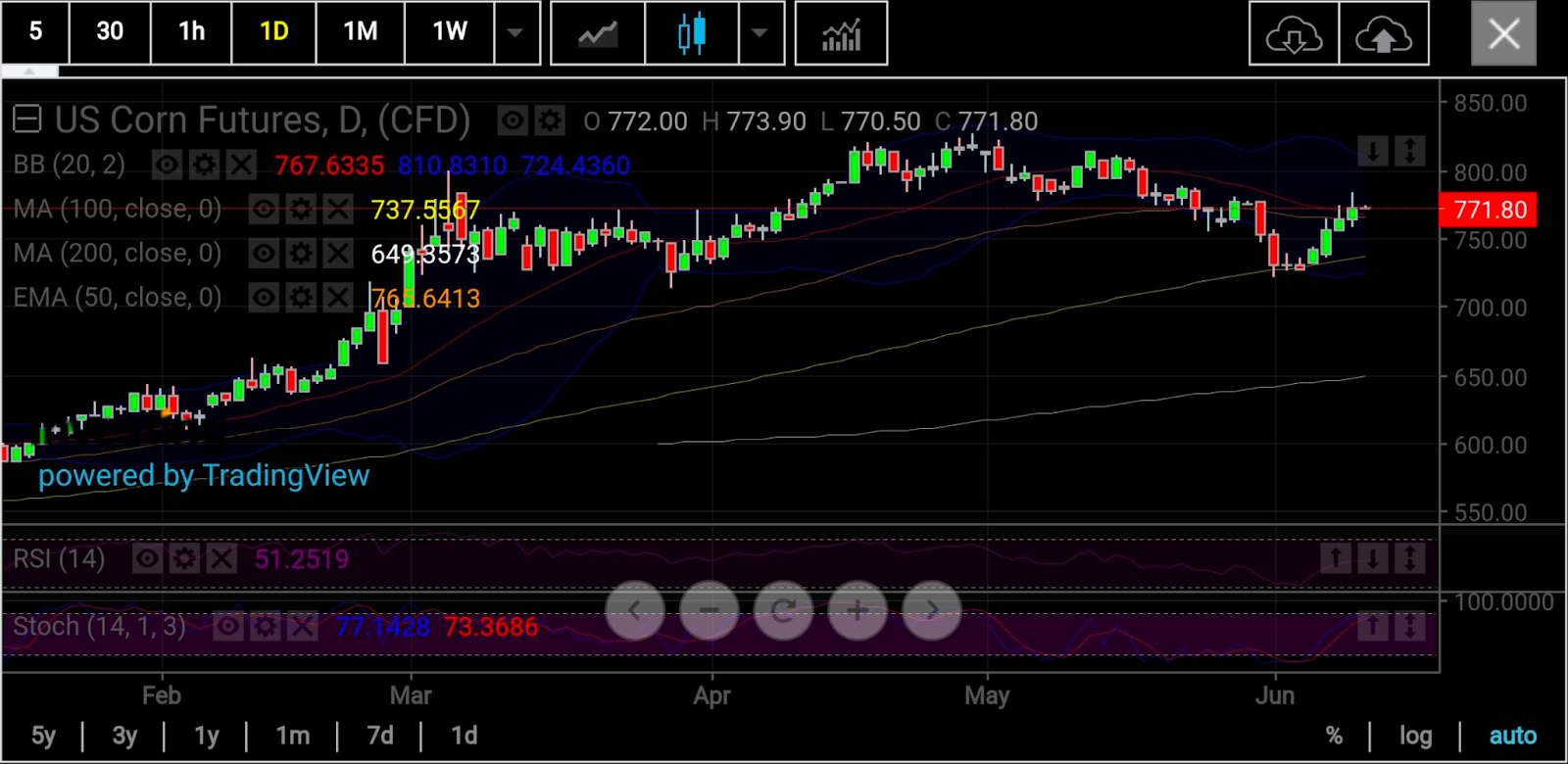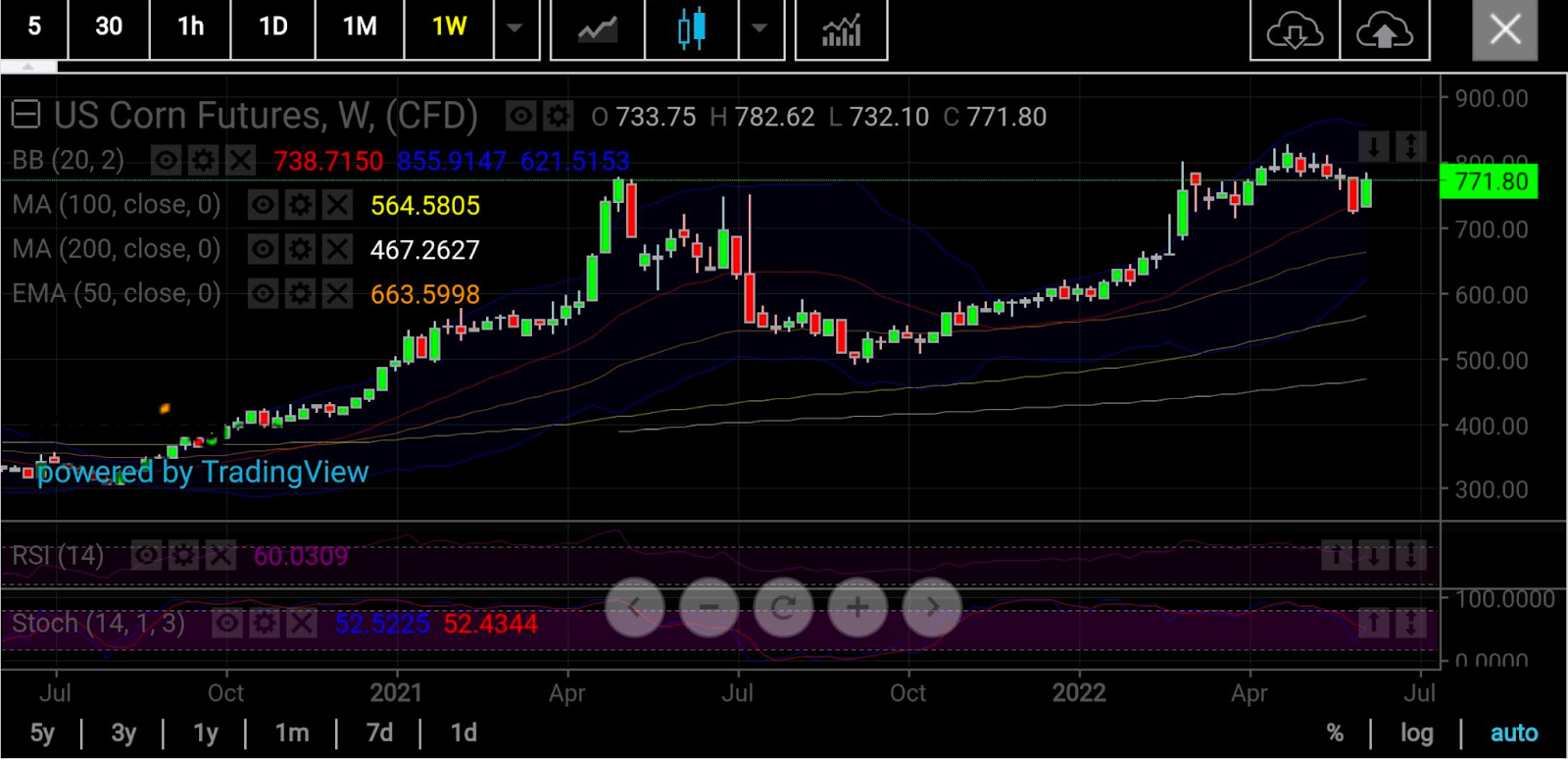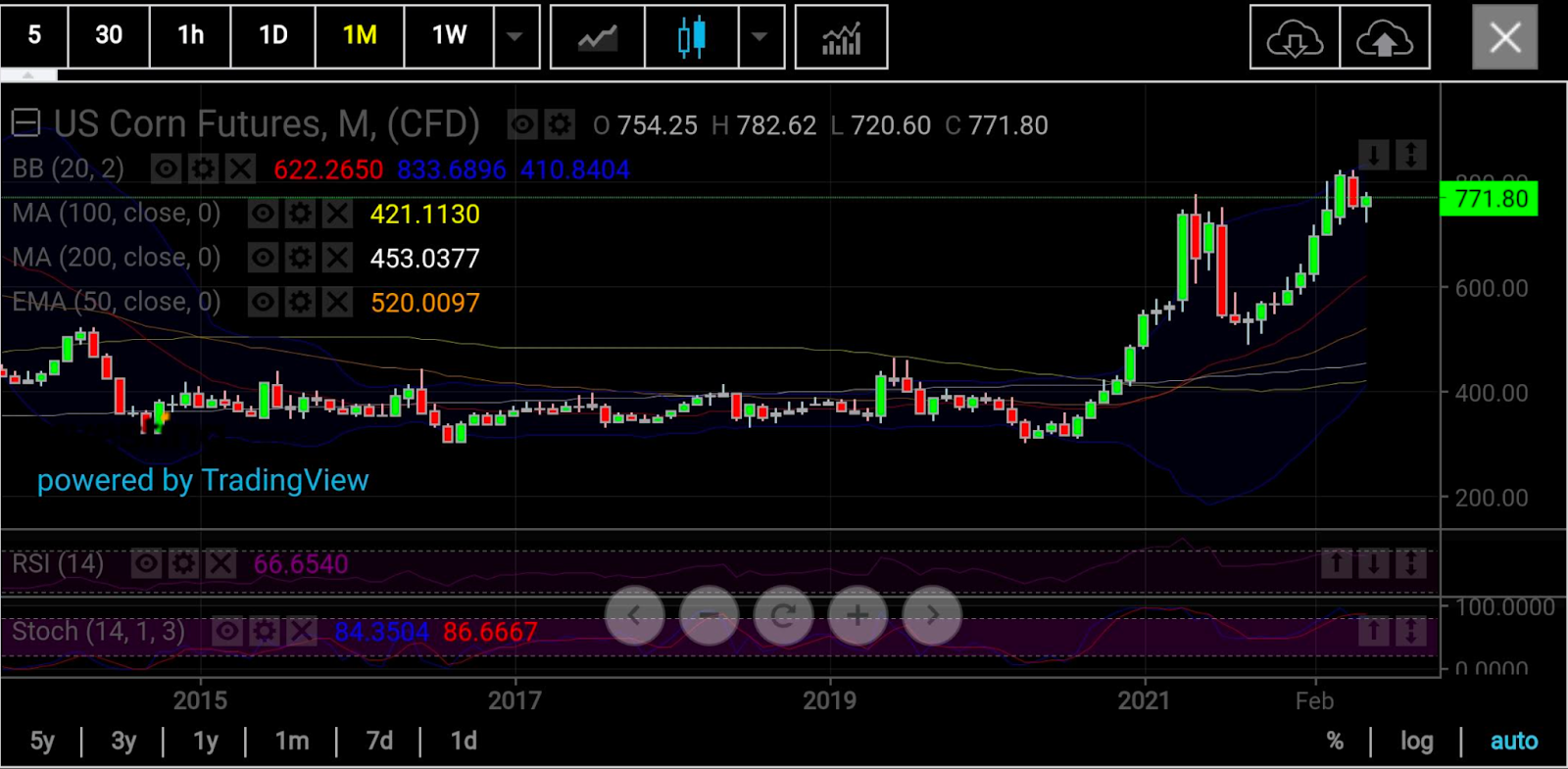Corn prices are having their biggest rally in 15 weeks as "prevent planting,” a form of crop rationing by US farmers, looks set to add to the global squeeze in the grain’s supply.
The front-month contract in US corn futures, July, was at $7.72 per bushel ahead of Friday’s open in Chicago, after running to a three-week high of $7.82 in Thursday’s session.
That put corn up by 6% on the week—its biggest advance since the week to Feb. 25, when the market surged 14.5% as Russian forces rolled into Ukraine, upending global energy and grains markets. Until the war, the two countries jointly accounted for 2.6% of world corn production.

All charts courtesy of skcharting.com
Volatility had cost corn futures in the three weeks prior to this culminating in a 7% loss in May. That was only the second month in ten that the crop registered a loss, since a rally that began in September amid last year’s weak global plantings. Corn’s run-up began even before the multi-month rally in oil that started in November 2021. Year-to-date, it is up 30%.
Adding to the fundamental backdrop in corn prices now is a strengthening technical picture, with a chart-based rally as well that could stay. But more on that later.
First the crop: Unusually high prevent-planting are clouding US corn output prospects for the 2022-23 marketing year (September-August).
This comes at a time when world supplies were already super-stretched by the Russia-Ukraine conflict, S&P Global Commodity Insights said in a roundup of the US corn situation.
Inclement weather conditions in parts of the United States during the peak corn-planting period are keeping farmers away from their fields, raising concerns that they would leave fields fallow and opt to take prevent-planting insurance payments, the S&P report said.

Concern about prevent-planting acreages is highest in North Dakota and Minnesota, as these states fell farthest behind their five-year averages for corn acres as of June 5.
Though final planting dates for corn vary according to the different US regions, final dates across the country fall between the end of May through June 5. After that, farmers can opt for prevented-plant payments.
"There will be a fair amount of prevent plant in areas—especially toward the western edge of Minnesota and into the eastern Dakotas—farmers wanted to plant corn and many still have been trying extremely hard, but the clock is about done ticking," Minnesota corn and soybean farmer Jonathan Mikkelson said in comments carried in the S&P Global roundup.
Platts Analytics, a division of S&P, sees 3.5 million-4.0 million acres of prevented planting in US corn for the current season.
Opting for prevented planting payments has been the last resort for farmers this year given that market opportunities are good, he added.
"The market was calling for corn and crop planting,” MIkkelson, the Minnesota farmer, said.
"Farmers were poised to plant, but in some cases weather and field conditions just didn't allow for planting before time ran out."
Pete Meyer, head of Grain, Oilseed and Advanced Feedstocks at Platts Analytics, added:
"Certainly, the prevent plant acres will be higher than last year's 2.1 million acres given the wetness."
"If I had to guess, probably around 3.5 million-4 million acres.”
The US Department of Agriculture, meanwhile, estimates that total corn output from the country will fall 4% on year in 2022-23.

So, what do corn’s technicals say?
Wednesday’s three-week high of $7.83 in July corn could extend to $8.25 if buying momentum did not yield, said Sunil Kumar Dixit, chief technical strategist at skcharting.com.
Dixit noted that corn gained buying momentum after its recent drop to the 100-Day Simple Moving Average of $7.20 that forming a short-term support base at between $7.20 and $7.25 that propelled it toward Thursday’s high of $7.83, using further strength derived from its position above the daily middle Bollinger Band of $767.
Added Dixit:
“Weekly price action indicates corn has gathered momentum and is rising above the previous week's high of $7.77 and a weekly settlement above the said level will further affirm the up move that has targets at $8.00, $8.20 and $8.25.”
But he also cautioned that any weakness below $7.20 will invalidate the upside move. Adding:
“Exposing corn to the 700 and 100 Day-SMA of $6.65 will dynamically coincide with the 50-week Exponential Moving Average that will trigger further weakness."
Disclaimer: Barani Krishnan uses a range of views outside his own to bring diversity to his analysis of any market. For neutrality, he sometimes presents contrarian views and market variables. He does not hold positions in the commodities and securities he writes about.
